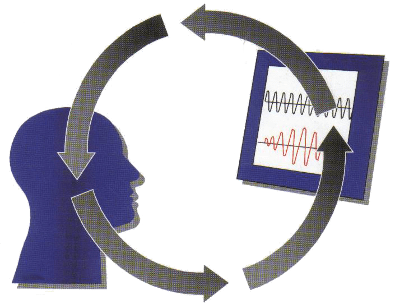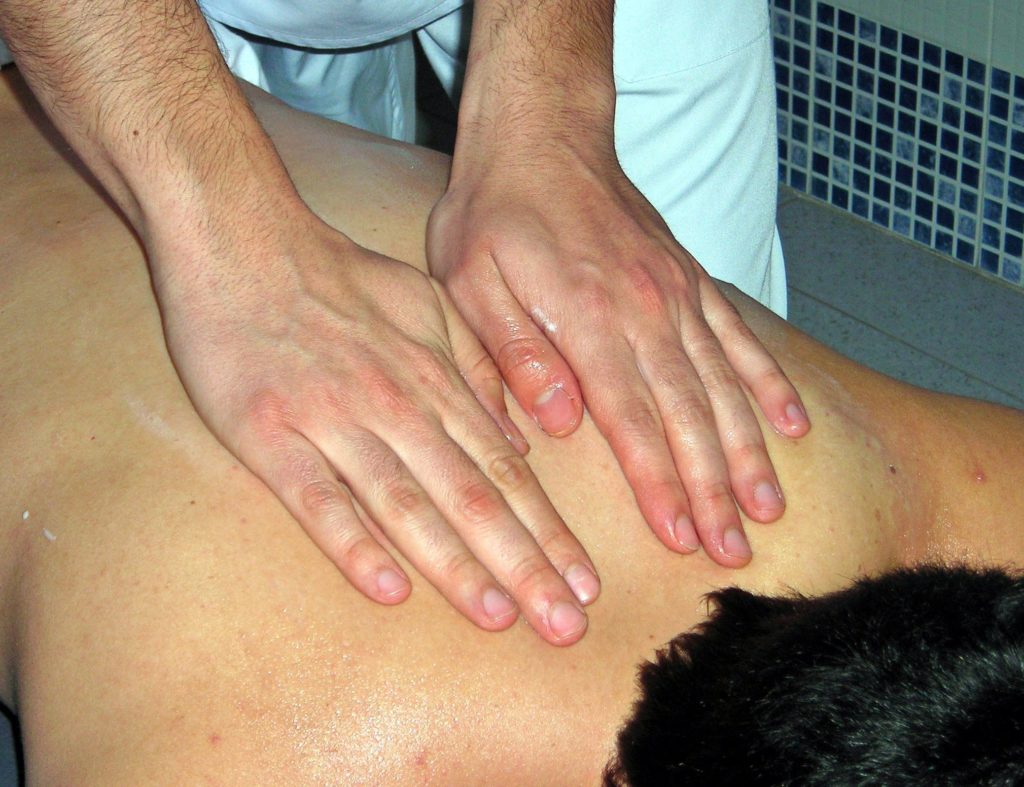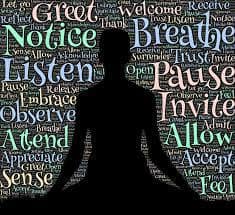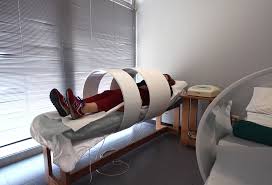Lady Gaga Cancelling Tour Due to Fibromyalgia Pain

Stefani Joanne Angelina Germanotta, a.k.a. Lady Gaga, has cancelled the last 10 dates of her world tour due to “severe pain”. Lady G has been suffering from fibromyalgia. On February 3, Gaga tweeted:
Gaga added:
Gaga had to pull out of a show in Rio in September due to similar complaints.In November, she resumed the tour in North America and in January played several dates in Europe. She performed most recently at the Grammys.
As our story about Gaga in September has a extensive review of fibromyalgia, today I thought we’d discuss something a little different: The Role Mind-Body Practices can have in the treatment of fibromyalgia.
What are Mind-Body Practices?
Mind and body practices are a large and diverse group of techniques that are administered or taught to others by a trained practitioner or teacher. Examples include acupuncture, massage therapy, meditation, relaxation techniques, spinal manipulation, and yoga.
What the Science Says About Complementary Health Approaches for Fibromyalgia
Mind and Body Practices
Acupuncture
 Acupuncture is a technique in which practitioners stimulate specific points on the body, known as acupuncture points. This is most often done using needles that penetrate the skin (manual acupuncture), but other techniques, such as using electrical current (electroacupuncture), may also be used.
Acupuncture is a technique in which practitioners stimulate specific points on the body, known as acupuncture points. This is most often done using needles that penetrate the skin (manual acupuncture), but other techniques, such as using electrical current (electroacupuncture), may also be used.- Limited evidence indicates that people with fibromyalgia who receive acupuncture have improvements in symptoms such as pain and stiffness when compared to those who don’t receive it (for example, people on a waiting list). However, acupuncture hasn’t been shown to be more effective than simulated acupuncture in relieving fibromyalgia symptoms. Electroacupuncture may produce better results than manual acupuncture.
- Acupuncture is generally considered safe when performed by an experienced practitioner using sterile needles. Improperly performed acupuncture can cause potentially serious side effects.
Biofeedback
 Biofeedback techniques measure body functions and give you information about them so that you can learn to control them.
Biofeedback techniques measure body functions and give you information about them so that you can learn to control them.- A small number of short-term studies of biofeedback, particularly electromyographic (EMG) biofeedback, in which people learn to control and decrease muscle tension, indicate that it may reduce fibromyalgia pain. However, the overall evidence on biofeedback is so limited that no definite conclusions can be reached about whether it’s helpful for fibromyalgia symptoms.
- In studies of EMG biofeedback for fibromyalgia, some participants reported that the procedure was stressful. No other side effects were reported.
Guided Imagery
 Guided imagery is a technique in which people are taught to focus on pleasant images to replace negative or stressful feelings. It may be self-directed or led by a practitioner or a recording.
Guided imagery is a technique in which people are taught to focus on pleasant images to replace negative or stressful feelings. It may be self-directed or led by a practitioner or a recording.- Studies of guided imagery for fibromyalgia symptoms have had inconsistent results. In some studies, patients who were taught guided imagery had decreases in symptoms such as pain and fatigue, but in other studies it had no effect.
- Guided imagery is one of a group of approaches called relaxation techniques. Relaxation techniques are generally considered safe for healthy people. Occasionally, however, people report unpleasant experiences such as increased anxiety.
Massage Therapy
 Massage therapy includes a variety of techniques in which practitioners manipulate the soft tissues of the body.
Massage therapy includes a variety of techniques in which practitioners manipulate the soft tissues of the body.- Several studies have evaluated various types of massage therapy for fibromyalgia. Most indicated that massage could provide short-term relief of some fibromyalgia symptoms. However, the current evidence is too limited to be considered conclusive. Experts recommend that massage therapy for fibromyalgia should not cause pain. It may be necessary to start with very gentle massage and increase the intensity gradually over time.
- Massage therapy appears to have few risks when performed by a trained practitioner.
Meditative Movement Practices (Tai Chi, Qi Gong, and Yoga)
 Tai chi and qi gong, which originated in China, and yoga, which is of Indian origin, all involve a combination of physical postures or movements, a focus on breathing, and meditation or relaxation. Because these three practices have so many features in common, they are sometimes grouped together as meditative movement practices.
Tai chi and qi gong, which originated in China, and yoga, which is of Indian origin, all involve a combination of physical postures or movements, a focus on breathing, and meditation or relaxation. Because these three practices have so many features in common, they are sometimes grouped together as meditative movement practices.- Exercise is beneficial for people with fibromyalgia, so meditative movement practices may be helpful because of the physical activity they involve. It’s also possible that the meditative component of these practices might help too. Some individual studies of tai chi, qi gong, or yoga for fibromyalgia symptoms have had promising results. However, there isn’t enough high-quality evidence on these approaches to allow definite conclusions to be reached about their effects.
- Meditative movement practices generally have good safety records when practiced under the guidance of a qualified instructor. Few side effects have been reported in studies of yoga, tai chi, or qi gong. However, these practices may need to be modified to make them suitable for people with fibromyalgia.
Mindfulness Meditation
 Mindfulness meditation is a type of meditation that involves completely focusing on experiences on a moment-to-moment basis.
Mindfulness meditation is a type of meditation that involves completely focusing on experiences on a moment-to-moment basis.- In several studies, mindfulness meditation training has led to short-term improvements in pain and quality of life in people with fibromyalgia. However, the number of studies is small, and the quality of the evidence is relatively low, so no definite conclusions can be reached. Frequent practice of mindfulness techniques may be important for good results. In a 2014 study of mindfulness for fibromyalgia, those participants who practiced mindfulness more frequently had a greater reduction in symptoms.
- Mindfulness and other forms of meditation are generally considered to be safe for healthy people. However, they may need to be modified to make them safe and comfortable for people with some health conditions.
Other Mind and Body Practices
So little research has been done on chiropractic care and hypnosis for fibromyalgia that no conclusions can be reached about these practices.
An approach called amygdala retraining, which includes various mind and body practices, has been proposed as a treatment for fibromyalgia. Because almost no research has been done on this approach, its effectiveness and safety cannot be evaluated.
Natural Products
- It has been suggested that deficiencies in vitamin D might worsen fibromyalgia symptoms. In one study of women with fibromyalgia who had low vitamin D levels, 20 weeks of vitamin D supplementation led to a reduction in pain.
- Researchers are investigating whether low magnesium levels contribute to fibromyalgia and if magnesium supplements might help to reduce symptoms.
- Other natural products that have been studied for fibromyalgia include dietary supplements such as soy, S-adenosyl-L-methionine (SAMe), and creatine, and topical products containing capsaicin (the substance that gives chili peppers their heat). There’s not enough evidence to determine whether these products are helpful.
- “Natural” doesn’t necessarily mean “safe.” Natural products can have side effects, and some may interact with medications. Even vitamins and minerals (including vitamin D and magnesium) can be harmful if taken in excessive amounts.
Other Complementary Approaches
Balneotherapy
 Balneotherapy is the technique of bathing in tap or mineral water for health purposes; it also includes related practices such as mud packs. Although some research has been done on balneotherapy for fibromyalgia, there’s not enough evidence to reach definite conclusions on whether it relieves symptoms.
Balneotherapy is the technique of bathing in tap or mineral water for health purposes; it also includes related practices such as mud packs. Although some research has been done on balneotherapy for fibromyalgia, there’s not enough evidence to reach definite conclusions on whether it relieves symptoms.- Balneotherapy has a good safety record.
Homeopathy
 Homeopathy is a medical system based on the unconventional idea that a disease can be cured by highly diluted solutions of a substance that causes similar symptoms in healthy people. Studies of homeopathy have not demonstrated that it is beneficial for fibromyalgia.
Homeopathy is a medical system based on the unconventional idea that a disease can be cured by highly diluted solutions of a substance that causes similar symptoms in healthy people. Studies of homeopathy have not demonstrated that it is beneficial for fibromyalgia.- Highly diluted homeopathic remedies are generally safe. However, not all products labeled as homeopathic are highly dilute; some may contain substantial amounts of ingredients and therefore could cause side effects.
Magnetic Therapies
 Static (permanent) magnets are found in magnetic mattress pads, shoe inserts, bracelets, and other products. There’s not enough evidence on static magnets to allow any conclusions to be reached.
Static (permanent) magnets are found in magnetic mattress pads, shoe inserts, bracelets, and other products. There’s not enough evidence on static magnets to allow any conclusions to be reached.- Electromagnets are used in a type of treatment called transcranial magnetic stimulation (TMS), which influences brain activity. The U.S. Food and Drug Administration has approved certain TMS devices for treating migraine and treatment-resistant depression. A small number of preliminary studies have evaluated TMS for fibromyalgia symptoms, and some have had promising results.
- Magnets and magnetic devices may not be safe for people who have metal implants or medical devices such as pacemakers in their bodies. Headaches have been reported as a side effect in several studies of TMS for fibromyalgia.
Reiki
 Reiki is a complementary health approach in which practitioners place their hands lightly on or just above a person, with the goal of facilitating the person’s own healing response. An NCCIH-funded study examined the use of Reiki for fibromyalgia-related pain. The study showed no effect of Reiki on pain or any of the other outcomes measured in the study (physical and mental functioning, medication use, and visits to health care providers).
Reiki is a complementary health approach in which practitioners place their hands lightly on or just above a person, with the goal of facilitating the person’s own healing response. An NCCIH-funded study examined the use of Reiki for fibromyalgia-related pain. The study showed no effect of Reiki on pain or any of the other outcomes measured in the study (physical and mental functioning, medication use, and visits to health care providers).- Reiki appears to be generally safe.
From the National Center of Complementary and Integrative Health





























3 Comments